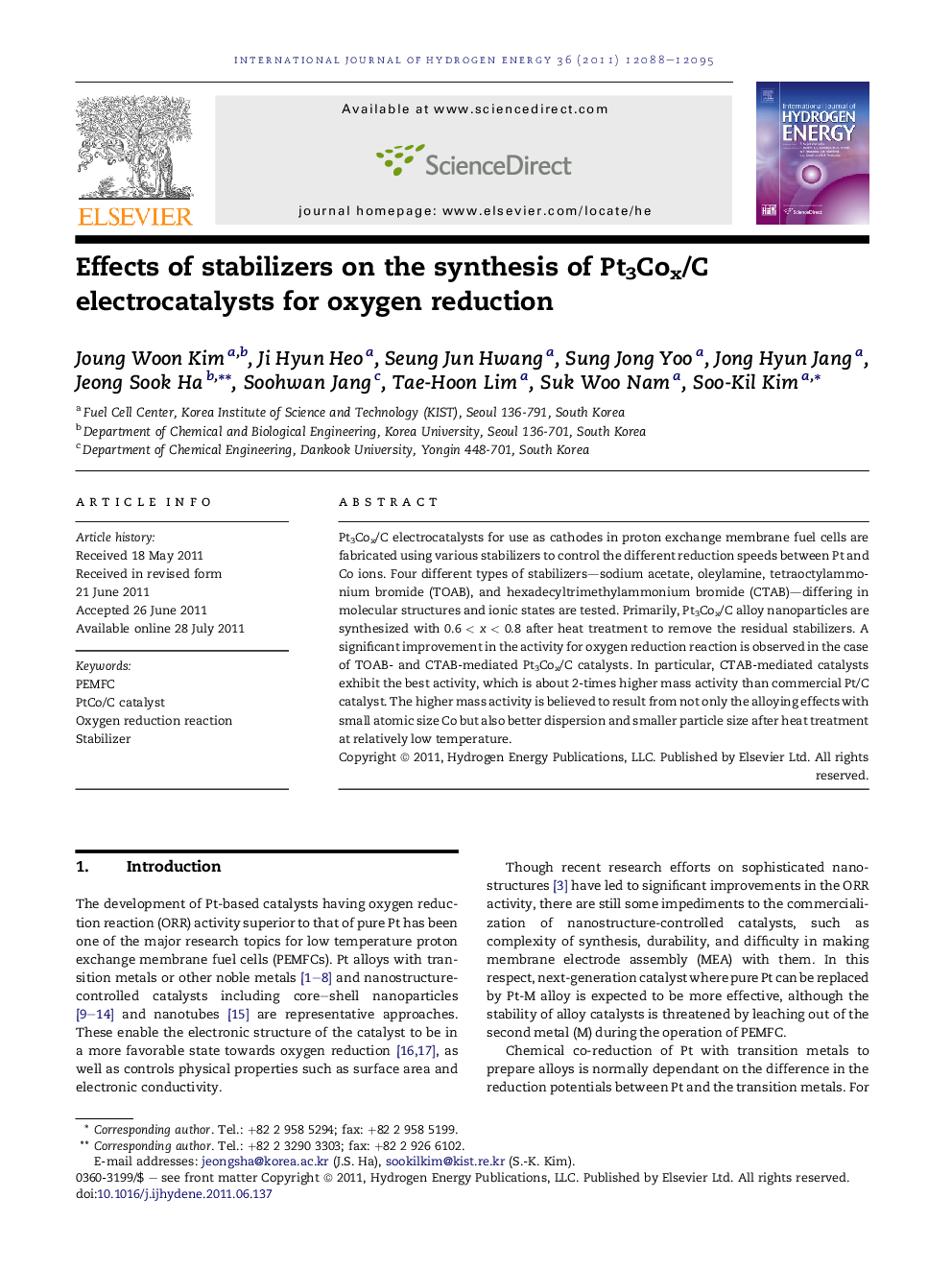| Article ID | Journal | Published Year | Pages | File Type |
|---|---|---|---|---|
| 1282408 | International Journal of Hydrogen Energy | 2011 | 8 Pages |
Pt3Cox/C electrocatalysts for use as cathodes in proton exchange membrane fuel cells are fabricated using various stabilizers to control the different reduction speeds between Pt and Co ions. Four different types of stabilizers—sodium acetate, oleylamine, tetraoctylammonium bromide (TOAB), and hexadecyltrimethylammonium bromide (CTAB)—differing in molecular structures and ionic states are tested. Primarily, Pt3Cox/C alloy nanoparticles are synthesized with 0.6 < x < 0.8 after heat treatment to remove the residual stabilizers. A significant improvement in the activity for oxygen reduction reaction is observed in the case of TOAB- and CTAB-mediated Pt3Cox/C catalysts. In particular, CTAB-mediated catalysts exhibit the best activity, which is about 2-times higher mass activity than commercial Pt/C catalyst. The higher mass activity is believed to result from not only the alloying effects with small atomic size Co but also better dispersion and smaller particle size after heat treatment at relatively low temperature.
► Pt3Cox/C as an oxygen reduction catalyst for proton exchange membrane fuel cell. ► Stabilizer CTAB enables Pt3Co0.76/C alloy synthesis with very uniform size of 2.8 nm. ► Pt3Co0.76/C catalyst has superior oxygen reduction mass activity than commercial one by 2-times.
